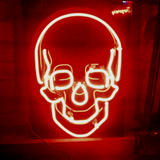

Where is the lesion In a pacient with right hemiparesis and left peripheral facial palsy: A)cortex of the left hemisphere B) left internal capsule C) left pons D)right pons E)left medulla F) left mesencephalic peduncle G)right mesencephalic peduncle
Let' try to find the answer by exclusion! A&B-any lesion of the left cortex and left internal capsule will affect the contralateral part of the body(a right paresis/plegia) so those 2 are not the answer. E - the motor nucleus of the facial nerve is in the pons not the medulla so a lesion in the medulla will not affect the facial nerve . F&G -a lesion in the mesencephalic peduncle will also give a central facial palsy (contralateral to the lesion) because it's above the nucleus of the facial nerve. THE CORRECT ANSWER IS C- THE LEFT PONS --in the pons the corticospinal tract (pyramidal) descends to the medulla abd it's still uncrossed (so any lesion here will give contralateral paresis) , in this case if the left corticospinal tract is affected in the pons there will be RIGHT hemiparesis/plegia; In the pons there is the motor nucleus of the facial nerve (which receives fibers from both hemispheres) so a lesion at the level of the nucleus will give a peripheral facial palsy, on the side of the lesion-in this case if the left motor nucleus of the facial nerve is affected there will be a LEFT peripheral facial palsy.This might happen in a inferior medial pontine syndrome, also called Foville syndrome. D- a lesion in the right pons will give opposite signs. I posted some images that will help you visualise this, just go to my profile😊 A doctor asked me this question in my neurology rotation and I did not know at the time so I had homework😧 Sorry for the late answer!


